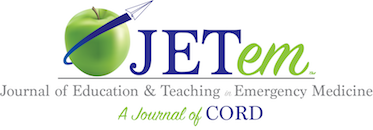Pizza and Paintballs: A Cost-Effective Model for Incision and Drainage Simulation Training
ABSTRACT:
Audience:
This innovation aims to educate medical students, physician assistant students (PA), and medical residents across various levels.
Background:
Skin abscesses are frequently encountered in clinical practice, and incision and drainage (I&D) is a common treatment performed in both emergency and outpatient settings.1,2 For advanced practice providers (APPs) and emergency medicine residents, learning this technical skill is particularly important, given the prevalence of abscesses in primary care and urgent care settings. At the Medical University of South Carolina (MUSC), PA students are taught this procedure during the didactic phase of their clinical skills and procedures course.
However, the cost of supplies for teaching this procedure has been a significant expense for the program, with commercial abscess task trainers ranging from $22.09 for a Pocket Nurse single-use pad to $65.99 for a SurgiReal tissue pad.³ In contrast, our model cost is approximately $198 for ~100 learners, demonstrating substantial cost savings for resource-limited programs.
This manuscript offers a comprehensive guide for crafting an innovative, cost-effective, and true-to-life simulation model designed specifically for I&D training for healthcare practitioners. The materials required for this model can be conveniently sourced from Amazon.com. The proposed technique aims to significantly enhance the educational experience of healthcare practitioners as they acquire these vital clinical skills.
Educational Objectives:
Upon completing this lab session, the participant should have the capability to: 1) describe the indications, contraindications, and reasons for performing I&D of an abscess, 2) select the necessary equipment for performing I&D of an abscess, 3) demonstrate the necessary steps for performing an I&D procedure on a simulated abscess.
Educational Methods:
The lab was designed for an 8:1 trainee-to-instructor ratio and a 45-minute duration, and utilized paintballs inserted under rolled pizza dough to simulate “skin.” Trainees practiced using lidocaine, syringes, and needles with sterile water, and performed the field block technique. They made incisions in the “abscess” using scalpels, expressed “purulent” material (white paint), removed the “capsule” (paintball shell), and swabbed the material with sterile swabs. Materials included Chux pads, pizza dough, paintballs, gloves, alcohol swabs, needles, syringes, sterile water, scalpels, and applicators, costing $198.06 in total, or $9.56 per student, mostly purchased from Amazon.com.
Research Methods:
A Redcap survey was distributed to evaluate the effectiveness of an abscess drainage lab in meeting predefined learning objectives. The survey, sent to 188 students, received a 35% response rate. Participants were asked five questions, rated on a 5-point Likert scale, assessing the lab’s value in teaching incision and drainage (I&D), field block, and needle safety. Responses were dichotomized into “disagree/strongly disagree” and “agree/strongly agree.”
Results:
The lab was positively evaluated, with 86.15% (95% CI 75.3–93.5) of respondents recommending the lab be repeated, and 81.82% (95% CI 70.4–90.2) stating the lab provided a realistic simulation of abscess drainage. Additionally, 84.85% (95% CI 73.9–92.5) of participants reported improved confidence in performing I&D, 87.88% (95% CI 77.5–94.6) felt their field block skills improved, and 93.94% (95% CI 85.2–98.3) expressed increased comfort with needle safety.
Discussion:
The simulation lab teaches crucial skills such as abscess incision and drainage, field block dexterity, and needle safety during lidocaine preparation. It offers a safe environment for students to practice these skills before patient interaction in clinical settings, using cost-effective materials like paintballs and pizza dough. Similar low-cost abscess simulation models have been described, including reusable ultrasound-guided training methods, further supporting the value of inexpensive, reproducible alternatives for procedural education.4 Although cyst wall removal is included in the simulation checklist, in actual practice this is often not attempted during acute drainage when inflamed. Patients are generally referred to outpatient surgery for follow-up.
While there are limitations to this method, including inability to practice breaking up loculations and limitations of the authenticity of the pizza and paintballs, the cost-effectiveness of the lab allows for students an engaging avenue to practice these skills and gain confidence prior to entering clinical rotations. Also, the low response rate among students surveyed likely is secondary to delay between the lab and survey distribution, and could be improved with repeating this study with a shorter time interval between lab and survey with another cohort. Future studies could evaluate the pizza and paintball model in a noninferiority design compared to commercial task trainers to determine whether this cost-effective method maintains equivalent educational quality in programs with greater resources. While there are limitations in the response rate among students surveyed, the overall results reveal that utilizing this method improves student confidence in I&D, needle safety, and field block technique. The pizza and paintball I&D lab provides a cost-effective simulation of I&D and field blocks that can be replicated for use in other medical education programs.
Topics:
Abscess incision and drainage, cost-effective training, simulation, I&D.
